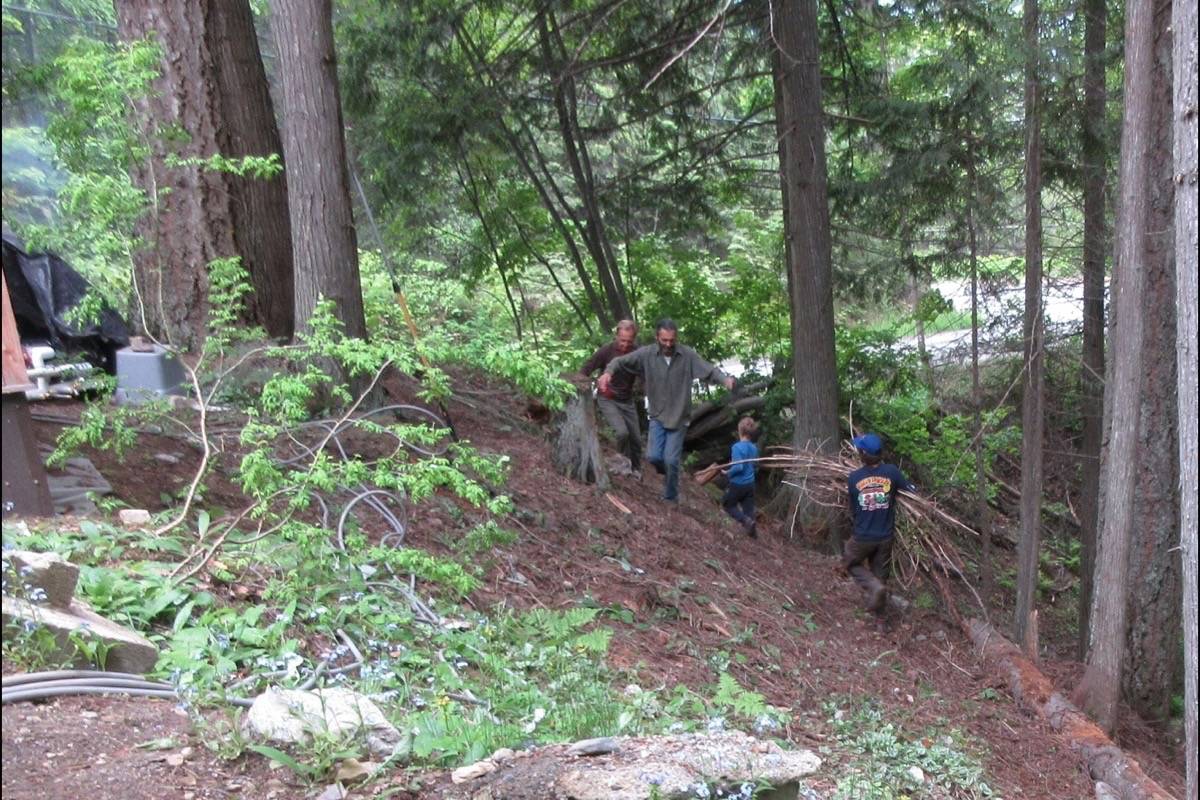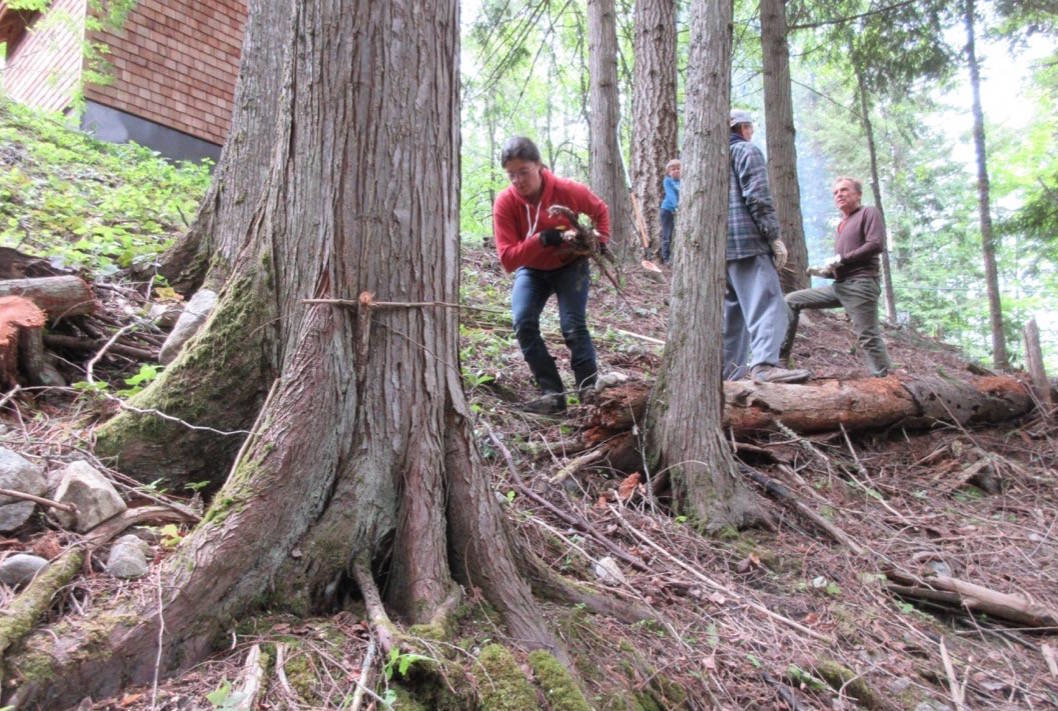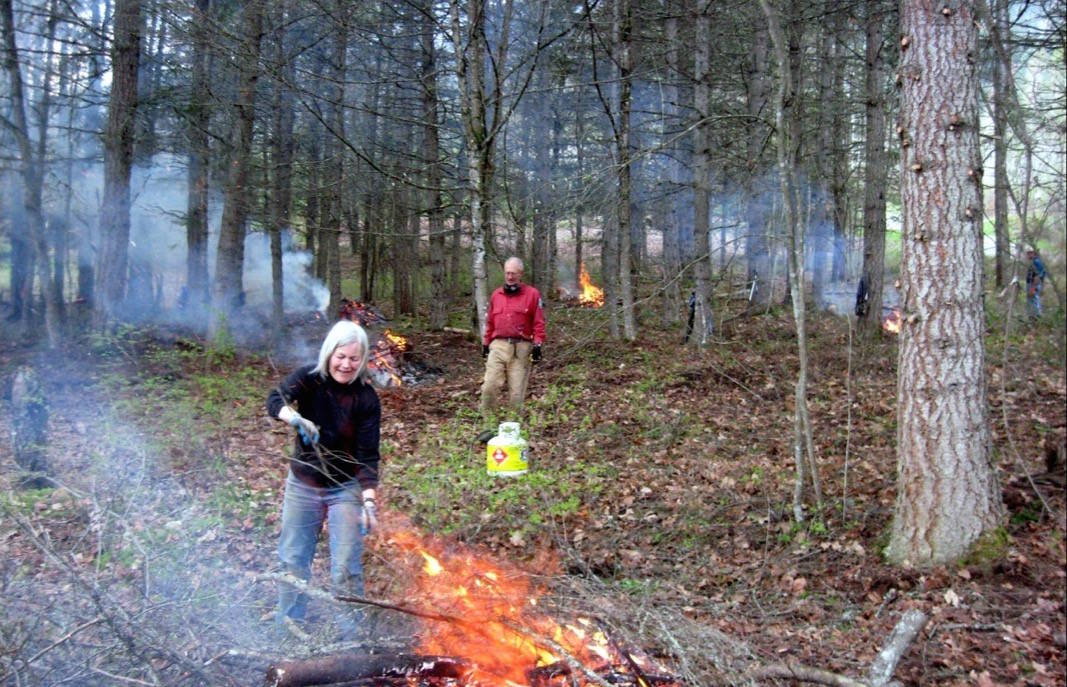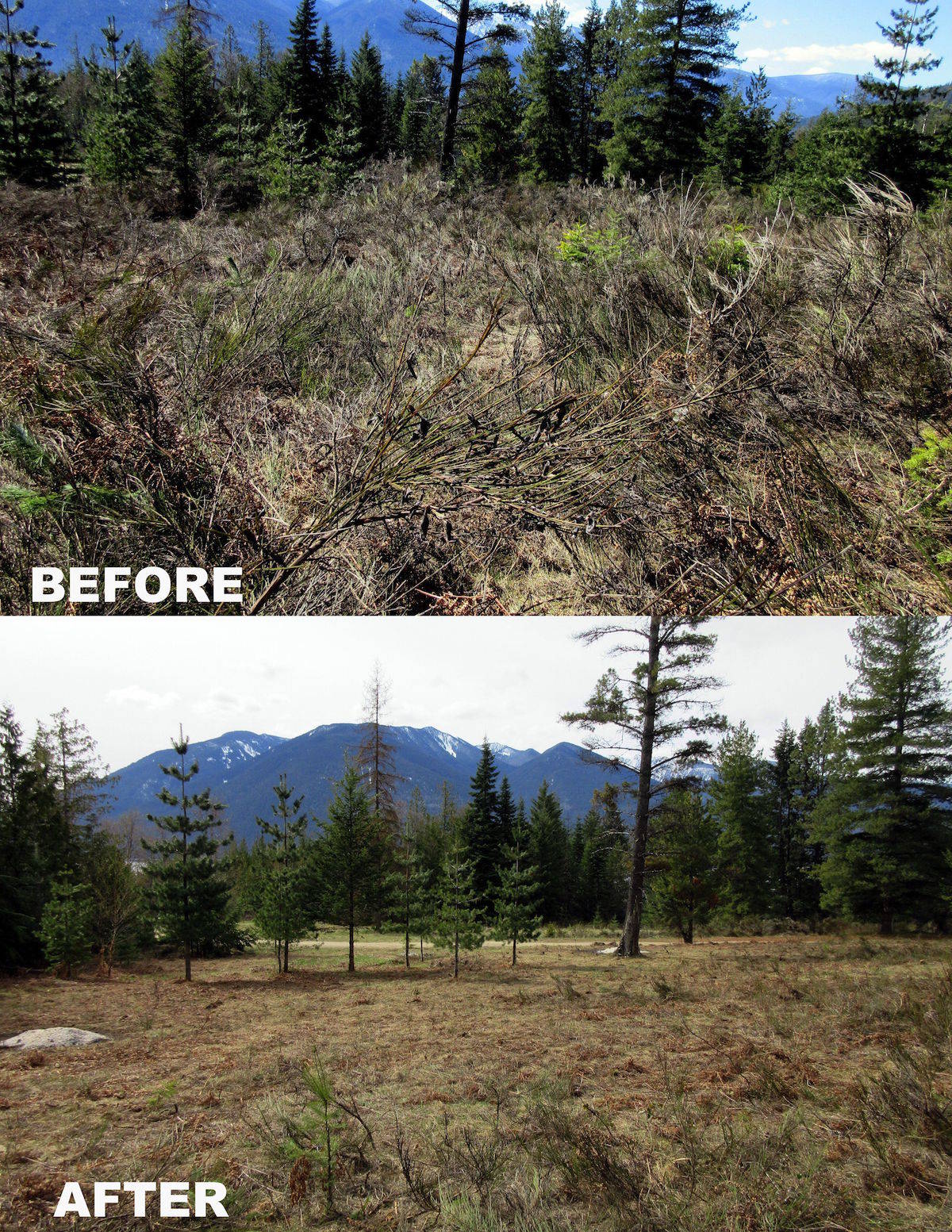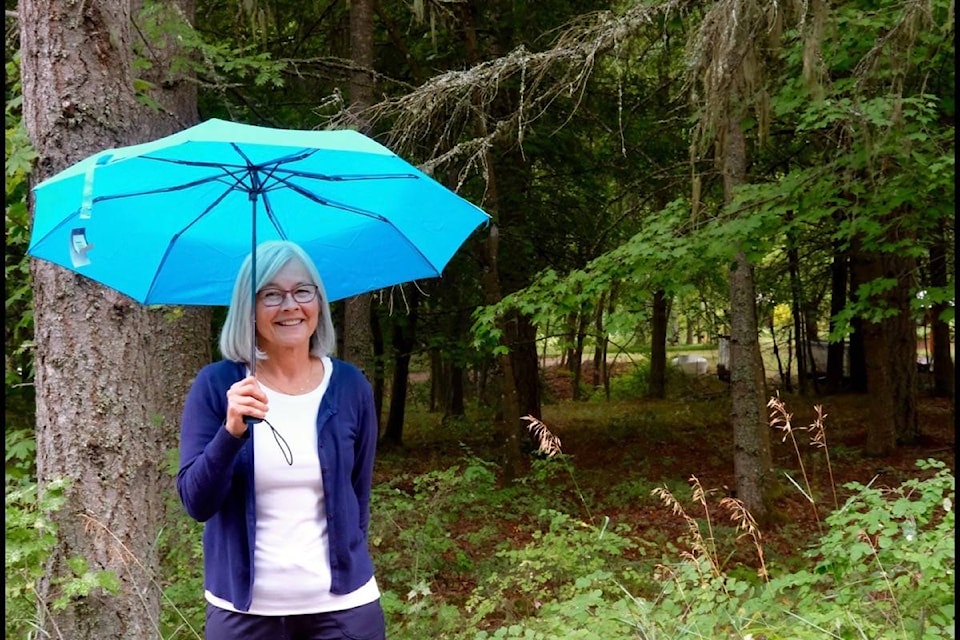Fourth in an occasional series about local wildfire protection efforts. The other three parts are listed at the end of this article.
One day last April a group of 25 Queens Bay residents got together at St. Francis in the Woods, the historic church that now serves as the community hall, for a few hours of hard communal labour.
In a forested ravine beside the church, they cleaned up dry undergrowth and fallen trees and branches. They removed the lower limbs of standing trees — ladder fuels, those limbs are called in wildfire circles, because they allow a ground fire to climb a tree.
They dragged it all into piles and burned it.
The event was this year’s annual FireSmart Day.
“There was lots of chitchat and laughter and hard work,” says resident Nancy Corrin, who has led the community’s FireSmart efforts for several years.
Queens Bay is rife with people who know a lot about logging, reforestation, and wildfires. A couple of them work as wildfire mitigation experts — one of them is Corrin’s son — and they helped the group plan the day’s work and set the fires in the right spots.
They took a break to have lunch together — a convivial gathering of people most of whom have known each other for decades.
“We raised our children together and felt a real sense of belonging to a community,” Corrin says.
At the end of the day the ravine was transformed, easy to walk through, and less prone to wildfire, because the community had cleaned the forest floor of dry, flammable material.
This is nothing new for the people of Queens Bay. They hold an event like this every year.
In 2018 they removed a field of broom that had taken over an entire hillside logged in the 1980s. The broom was up to 15 feet tall, Corrin says.
Another year they did fuel mitigation, similar to the work at the church, on a property owned by an elderly person unable to do it himself.
An earlier year they held an education event for the community with experts and demonstrations.
“We brought a lot of people together — the fire department was there and Fortis and some private fuel management companies,” says Corrin.
First in the Kootenays
Queens Bay was one of the first communities in BC and the first in the Kootenays to be awarded with the FireSmart designation by FireSmart Canada in 2015.
But being a FireSmart community involves a lot more than one annual event. There is education and planning going on year round, led by Corrin who chairs a community FireSmart board.
And it never ends: becoming officially FireSmart does not mean you have reached a specific threshold of preparedness and then you can rest easy.
“I think becoming a FireSmart community has helped to keep our sense of community happening,” Corrin says. “Nothing better than working with your neigbours toward a common goal.”
Firesmart Canada will give FireSmart status to small towns, neighbourhoods, or subdivisions if they meet a list of planning and reporting criteria. One of those is having an annual event like the ones described above – an event that moves the community toward being more FireSmart.
Another is engaging a specialist in the early stages to complete an assessment.
The Queens Bay assessor was Balfour Fire Chief Nora Hannon.
“Nora was our FireSmart representative,” says Corrin. “She and I went to every home in the bay, about 52 homes, and did a cursory fire smart evaluation. She was not looking to FireSmart each house, she was looking for general trends, what was being done in the community.”
The results were eye-opening.
Most noticeable to Corrin was the number of people storing propane and woodpiles up against their house.
“Many homes are made of wood, many are right in the forest. We knew this. We live in the woods. Going around and seeing everybody’s place and what might be done, that was good for us.”
Corrin said the group’s educational efforts and actions over the years have created gradual buy-in from the community but it took a while to help some people see the need for it.
“A lot of people look at where they live, in the middle of the forest, and say there is nothing I can do anyway,” she says.
“But gradually over time, there’s not a community member who has not done something to FireSmart their property. They have bought in. There are people who have spent thousands taking conifers away from their house. People have spent a lot of money getting ravines fuel-managed.”
And many people have done smaller things, she says, like managing the debris on their roofs.
“You will look around and see that this person did this, and that person did that. One neighbour does something and the next person looks and sees they have done it, and they say, oh, I could do that over here. It builds over time.”
All of this work done by landowners on their own property is at their own expense — there is no government subsidy.
Not only is the community trying to prevent damage from a forest fire, but they also realize that if a fire starts, they need to know what to do in the interval before the fire department gets there.
Many have tools at the ready – shovels, pulaskis, McLeod rakes, a water source, an emergency binder, a community phone tree. They hope to get some of their community members trained further in fire suppression in the near future, but they do have a fire department to rely on in the meantime, unlike some rural communities.
Surrounded by Crown land forest
When it comes to wildfire danger, though, this forested community is adjacent to forested crown land, much of it tenured to Cooper Creek Cedar, a local timber company.
Queens Bay residents and the Regional District of Central Kootenay (RDCK) want to collaborate with the company to create a shaded fuel break in an area to the north of the community.
Discussions about this between the company and the community and the RDCK are ongoing.
“It is a process,” Corrin says. “It is new for them and for us.”
The other articles in this series are:
• “Kalesnikoff to collaborate with RDCK, city, on logging near Nelson”
• “Nelson creates rules for wildfire resistant landscaping and building”
• “Partnership builds road for Nelson wildfire protection”
bill.metcalfe@nelsonstar.com
Like us on Facebook and follow us on Twitter
